The glaciated mountain pass at Lendbreen has given us a number of great finds, such as an Iron Age tunic, a Viking Age mitten and dead packhorses. In addition to these unique finds, the site has yielded a variety of artefact groups. One such group of artefacts is the subject of this blogpost – fifty-seven small pieces of textile recovered in the pass area. These finds are perhaps not so remarkable on an individual basis, but the sheer number of them and the context is puzzling.
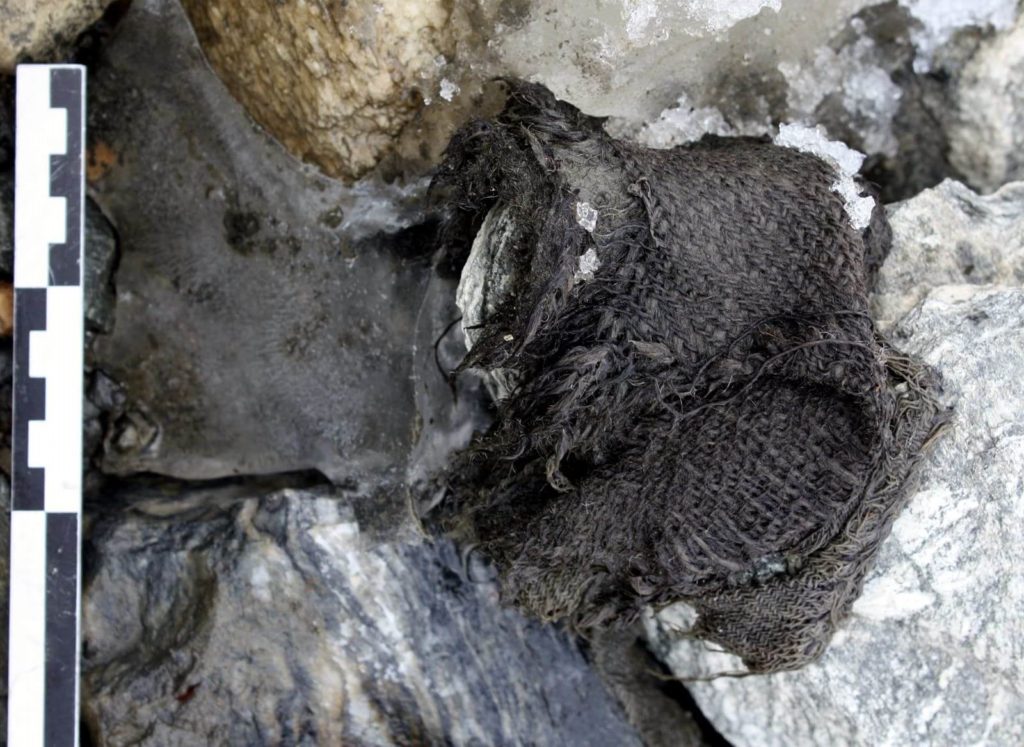
Torn by the wind?
When we started finding the pieces of textile, we had already discovered the Iron Age tunic (read about the tunic and the mitten here). While in the field, we thought that they could simply be fragments of complete objects of textile, torn to pieces by the heavy winds. This simple interpretation was probably much influenced by our own struggles with the heavy winds on the site.
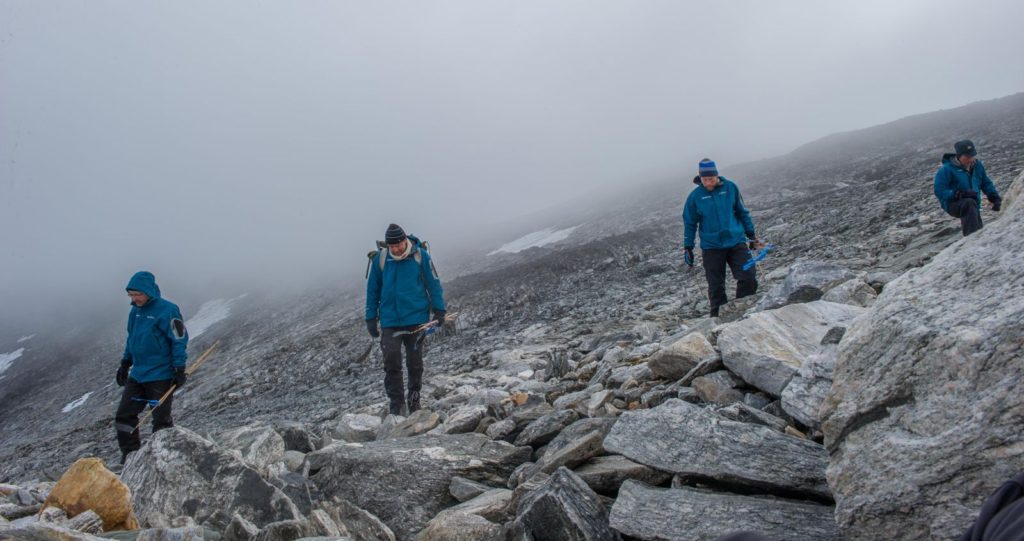
When the pieces of textile were catalogued at the Museum of Cultural History, this hypothesis started to appear less likely. Not two of the pieces of textile seemed to belong to the same object. They all had differences in the density of threads pr. cm, the thickness of the individual threads, in the weaving techniques and in other aspects. In addition, a few of the textile pieces showed that they had been cut, not torn.
Therefore, the conclusion was that the pieces of textile were likely to have been brought into the high mountains as rags or scraps, not as complete objects. Why?
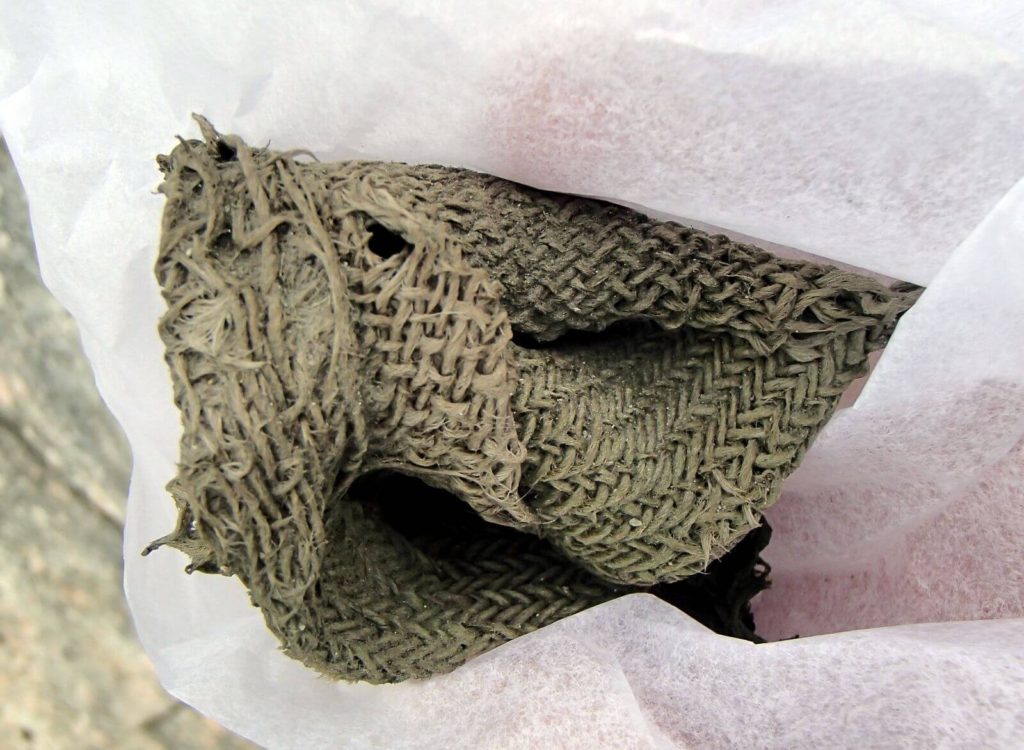
The textile pieces
Before trying to solve this riddle, let us look at the actual finds in more detail. Fifty-seven pieces of fabric (including a few pieces of felt) have been recovered in the mountain pass at Lendbreen so far. Most of the textiles are made of wool, but there also a few pieces of a light grey material, which we suspect is linen. The pieces vary in size from 31×25 cm to just a few centimeters across.
A few of the objects show traces of colouring, mainly in blue. Some of the pieces have seams or stitches along one side, showing that they were probably originally part of larger clothing items.
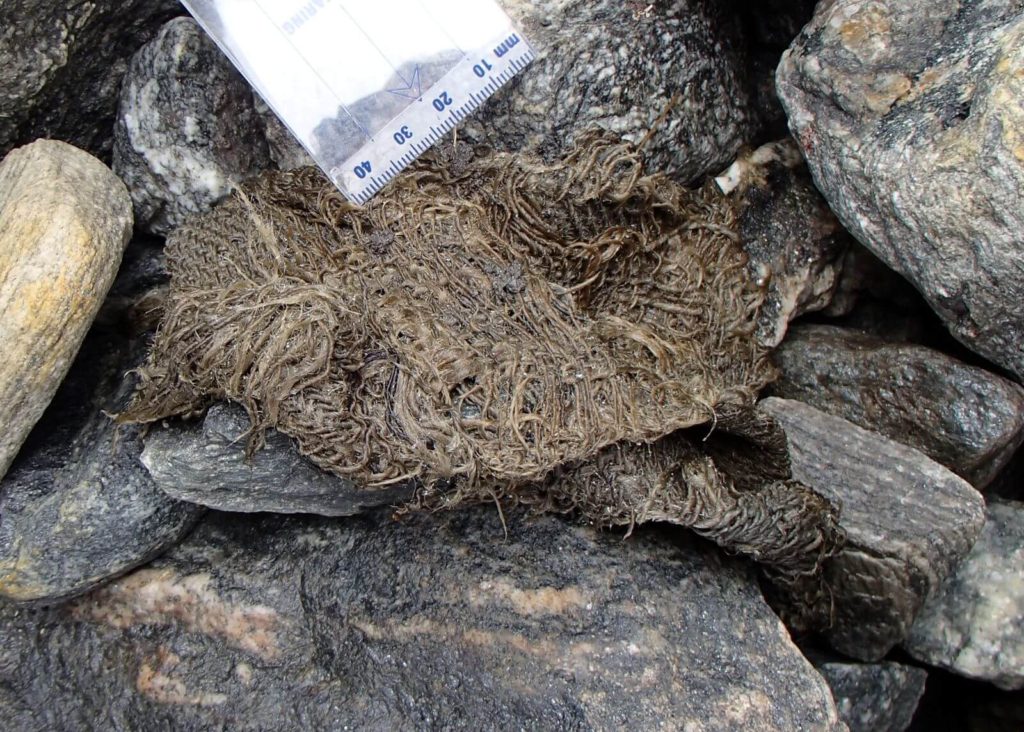
The textile pieces are in a varying state of preservation. Some are excellently preserved, while other have broken down into several fragments, with the warp and the weft coming apart. The varying degree of preservation is likely the result of different length of exposure outside the ice.
Only two of the many pieces of textiles have been dated so far. A large pieces with remains of blue colour is from the 10th century, while another piece, probably originally from some kind of clothing, belongs to the 13th century. The finds from the mountain pass are mainly dated to c. AD 300 – 1500, and it is possible that the pieces of fabric also will belong to the whole of this period, once dated.
Fragments of textile are known from other ice sites in Oppland, but they are rare. All these sites are associated with hunting. Lendbreen is the only mountain pass site, and thus it appears likely that the many pieces of textiles found here is connected to transport in some way.
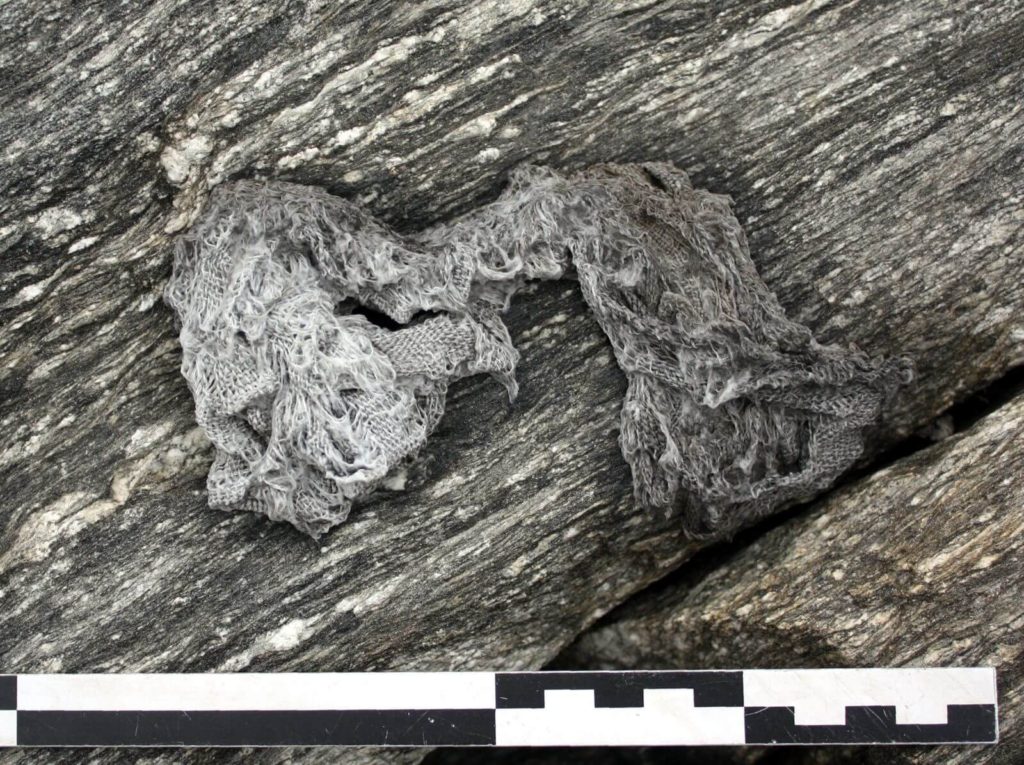
Toilet paper / sanitary binds?
Rags of textile are a well-known group of finds from waterlogged urban sites. They were used for toilet “paper” and sanitary binds (and a lot of other purposes). With the traffic of humans through the pass, a similar function is possible here. However, there is no traces of use on the textiles for such purposes. In addition, even with all the horse and reindeer dung preserved in the pass, we have not yet discovered human excrements. So, while possible, the use of the textile scraps for sanitary purposes is perhaps not likely.
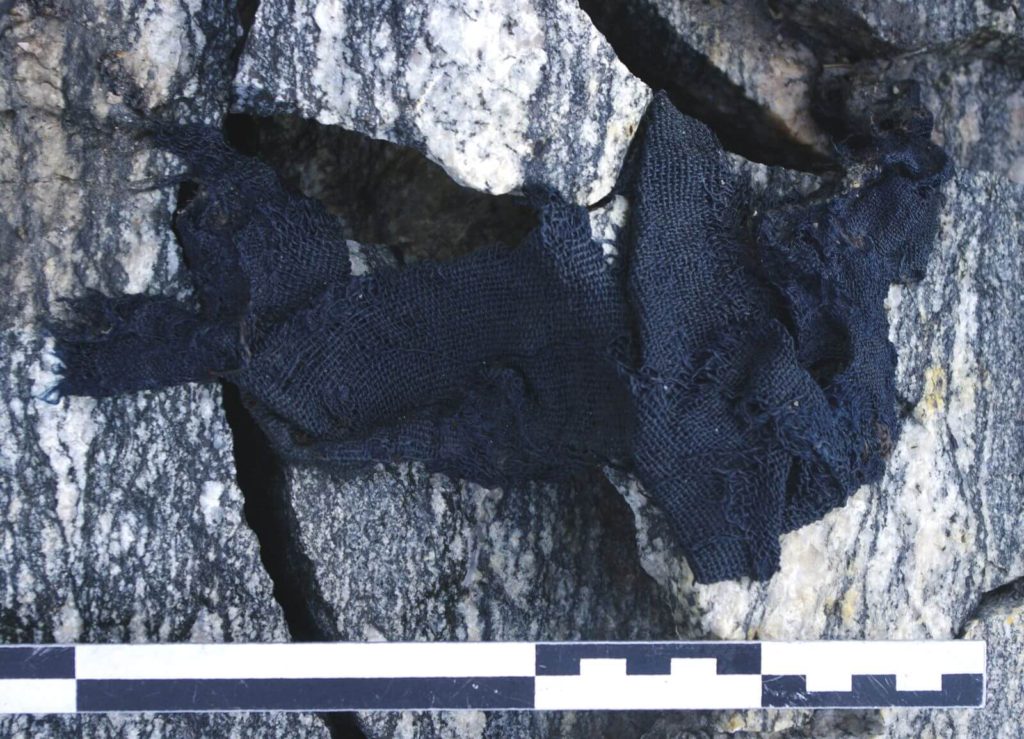
Foot protection for humans or farm animals?
There is another interesting possibility. It is known from local historic sources that farm animals, and especially pigs, could get sore feet from walking on stone and ice. This happened regularly on the way to or from the summer farms. To avoid this, scrap textiles were used for making small pouches, which were placed on the hooves of pigs. A similar use of protective footwear can be seen today on sled dogs.
Unfortunately, there is little evidence to back up this use of textile pieces at Lendbreen. None of the pieces have preserved traces of strings or bands used to tie them to the hooves. In addition, some of the pieces are simply too large for this purpose.
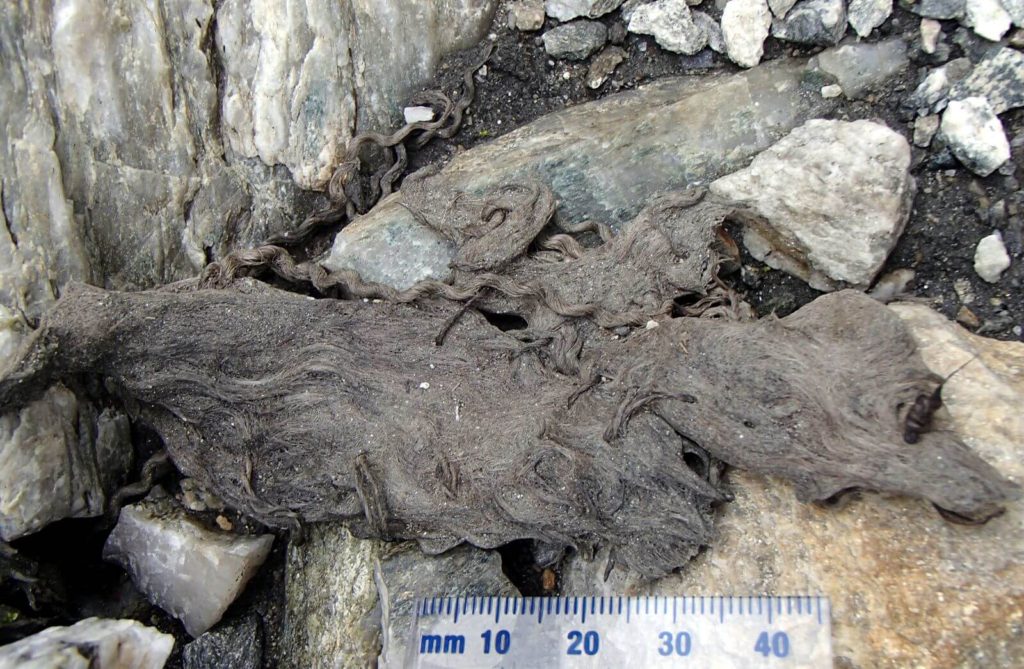
Humans also use pieces of textile for footwraps. We know that people crossing the Lendbreen ice wore shoes made from hide, with the hairs facing outwards for a better grip on the snow. Perhaps they wrapped their feet and/or their lower legs to protect from the cold?
Other purposes
There may have have been other reasons for the presence of textile rags in the pass. Could the rags have been used for marking the route over the pass in some way? Maybe attached to sticks or strings? Could they have been used for wrapping fragile items transported over the pass? Alternatively, could they have had a completely different use – of a religious character? Mountain passes in the Himalayas are cluttered with prayer flags mounted on strings. Somehow, using this as an analogy, while interesting and superficially appealing, appears out of context and too speculative.
The mystery remains
As this tour of hypothesis’ reveals – no single explanation fits the evidence. Could it be that a solution to the mystery could be found just here, in the use of the rags for a variety of purposes at Lendbreen, obscuring a clear, single explanation? Just look at the many different uses we have for rags today.
It is also possible that the textile rags were used for a purpose that is not known to us today, and which can potentially be revealed through careful analysis of the individual pieces recovered so far. Or perhaps the solution will be found among future finds of textile, which are presently still inside the ice at Lendbreen, waiting to melt out.
For now the mystery of the Lendbreen cloth remains unsolved.
